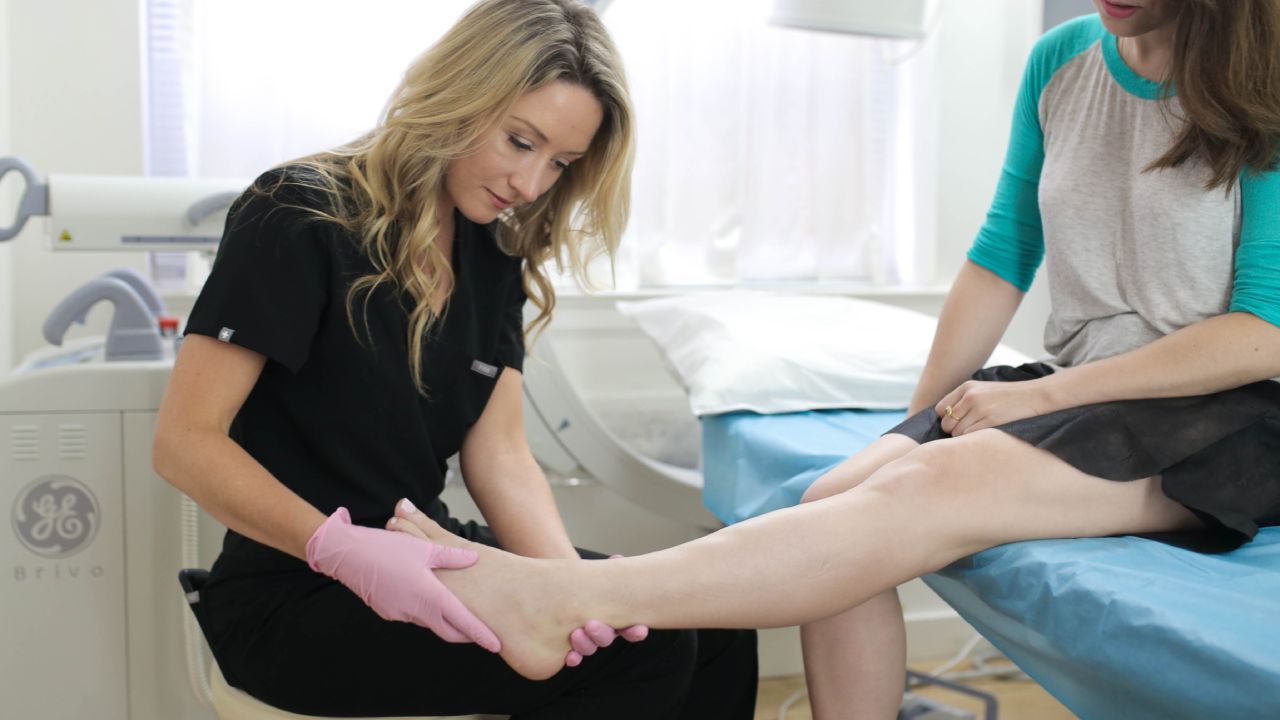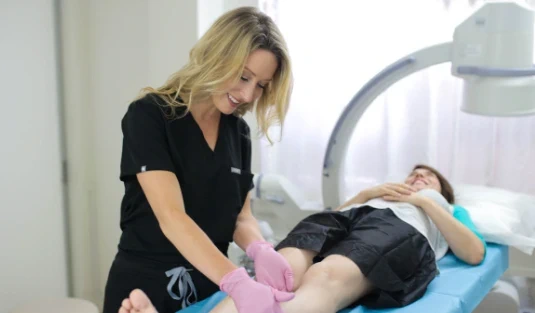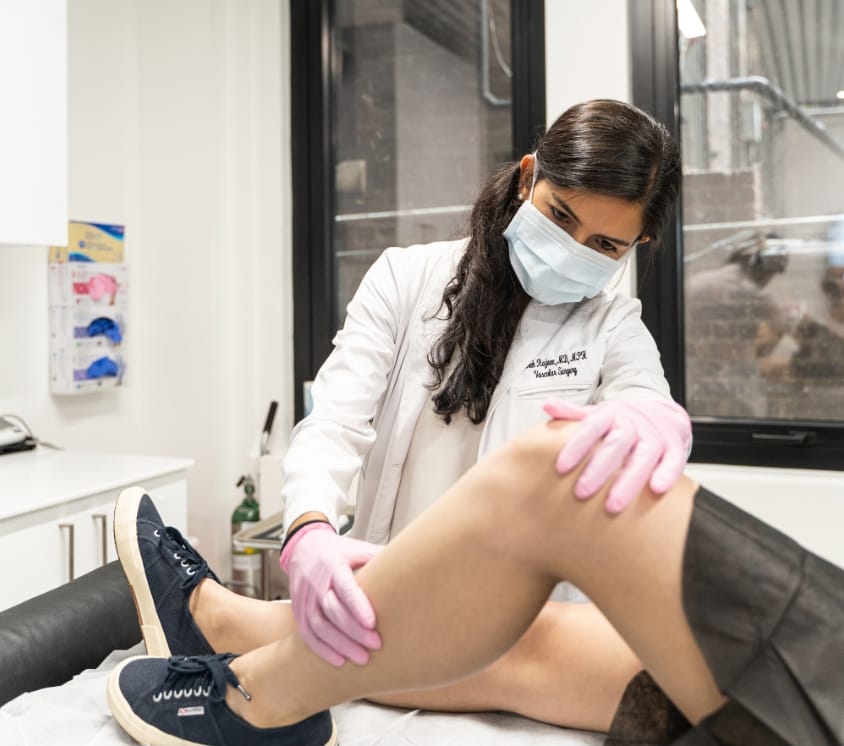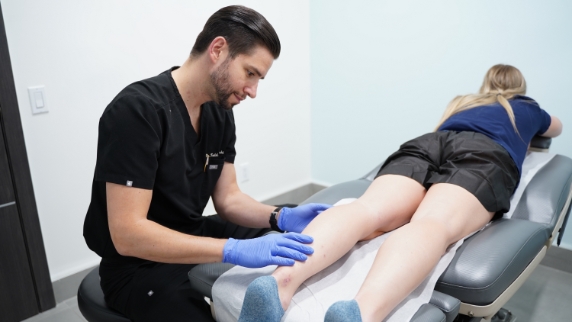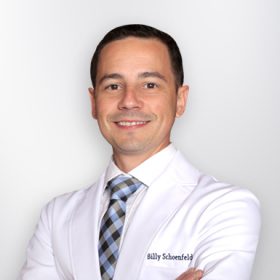Have you been noticing unsightly, bulging veins on your legs that weren’t there before? You might dismiss them as a cosmetic issue, but the truth is that these varicose veins could be an early sign of an underlying medical condition known as chronic venous insufficiency. Ignoring these veins can lead to more than just aesthetic concerns; it can affect your overall health.
At Vein Treatment Clinic, we understand how concerning it can be to notice these changes in your legs. We’re here to help you understand the main causes of varicose veins, why it’s crucial to treat them promptly, and how to identify the early signs and symptoms. If you notice any of these symptoms, contact us to schedule a consultation today.
What Are the Main Causes of Varicose Veins?
Varicose veins develop when the veins in your legs become enlarged, twisted, and overfilled with blood. But what causes this to happen? Let’s explore the main causes and risk factors behind this common vein condition.
Chronic Venous Insufficiency
One of the leading causes of varicose veins is chronic venous insufficiency (CVI), a condition where the veins have difficulty sending blood from the legs back to the heart. Normally, the veins have one-way valves that prevent blood from flowing backward. In CVI, these valves become weak or damaged, causing blood to pool in the veins. This pooling leads to increased pressure within the veins, which causes them to stretch, twist, and become varicose.
Heredity and Genetics
Your genetic makeup plays a significant role in whether you develop varicose veins. If your parents or grandparents had varicose veins, you are more likely to develop them as well. Genetic factors can affect the strength of your vein walls and the functionality of your vein valves, making you more susceptible to varicose veins.
Age
As you age, the wear and tear on the valves in your veins can cause them to function less effectively. This is why varicose veins are more common in older adults. The aging process causes veins to lose elasticity, and blood flow can become sluggish, leading to varicose veins.
Prolonged Standing or Sitting
Occupations or lifestyles that require you to stand or sit for long periods can increase your risk of developing varicose veins. When you stand or sit for extended periods, blood doesn’t flow as efficiently, leading to blood pooling in the veins of your legs. This increased pressure can weaken the vein walls and valves, contributing to the formation of varicose veins.
Hormonal Changes
Hormonal changes, particularly in women, can increase the risk of developing varicose veins. Pregnancy and menopause can influence hormone levels, which in turn can weaken vein walls and valves. The increased blood volume during pregnancy can also put additional strain on your veins, making varicose veins more likely to develop.
Obesity
Excess body weight puts additional pressure on your veins, particularly in the lower body. This added pressure can make it more difficult for your veins to push blood back to your heart, leading to the development of varicose veins. Obesity is a significant risk factor, and weight management can play a critical role in preventing and managing varicose veins.
Why It’s Important to Treat Varicose Veins Promptly
While varicose veins might seem like a minor cosmetic issue, they can lead to serious health complications if left untreated. Understanding the potential consequences of untreated varicose veins can help you appreciate the importance of seeking timely treatment.
Chronic Pain and Discomfort
One of the most immediate consequences of untreated varicose veins is chronic pain and discomfort. The increased pressure within the veins can cause aching, throbbing, and a heavy sensation in your legs. This pain can become more pronounced after long periods of standing or sitting, significantly affecting your daily activities and quality of life.
Skin Changes and Ulcers
Varicose veins can lead to changes in the skin around the affected area. You may notice discoloration, dryness, or itchiness. In more severe cases, varicose veins can cause venous ulcers—open sores that develop on the skin due to poor blood circulation. These ulcers can be difficult to heal and may lead to infections if not properly treated.
Blood Clots
One of the more dangerous complications of untreated varicose veins is the development of blood clots, specifically a condition known as superficial thrombophlebitis. This occurs when a blood clot forms in a vein just under the skin’s surface, causing inflammation and pain. While superficial thrombophlebitis is usually not life-threatening, it can increase your risk of deep vein thrombosis (DVT), a more severe condition where clots form in deeper veins and can potentially lead to life-threatening complications like a pulmonary embolism.
Increased Risk of Bleeding
Varicose veins that are close to the surface of the skin are more prone to injury. Even a minor bump or scrape can cause these veins to bleed. In some cases, the bleeding can be significant and difficult to control, especially if the veins are severely enlarged.
Learn to Identify the Early Signs and Symptoms of Vein Disease
Recognizing the early signs of vein disease can help you seek treatment before complications arise. Here are some symptoms to watch out for:
- Swollen, twisted, or bulging veins
- Aching or throbbing in the legs
- A heavy or tired feeling in the legs
- Itching or irritation around the veins
- Skin discoloration near the veins
- Swelling in the lower legs or ankles
- Pain that worsens after standing or sitting for long periods
- Restless legs, especially at night
If you notice any of these symptoms, it’s important to seek professional evaluation. Contact us to request insurance verification and learn how our board-certified vein doctors can help.
If You Notice Varicose Veins, Contact Us Without Delay
At Vein Treatment Clinic, we’re committed to providing the highest quality care for varicose veins and other vein-related conditions. Our state-of-the-art vein treatment clinics are located across New York, Long Island, California, Maryland, and New Jersey, making it easy for you to find a location that’s convenient for you. Our vein doctors, who are registered physicians in vascular interpretation, will assess your condition using duplex ultrasound and create a personalized treatment plan tailored to your specific needs.
Ignoring varicose veins can lead to a range of complications, but timely intervention can prevent these issues and improve your overall well-being. Whether you need sclerotherapy, endovenous laser ablation, radiofrequency ablation, or another minimally invasive treatment, our Harvard-trained vein specialists guide you through every step of the process. Visit your nearest vein clinic and take the first step toward healthier legs.








